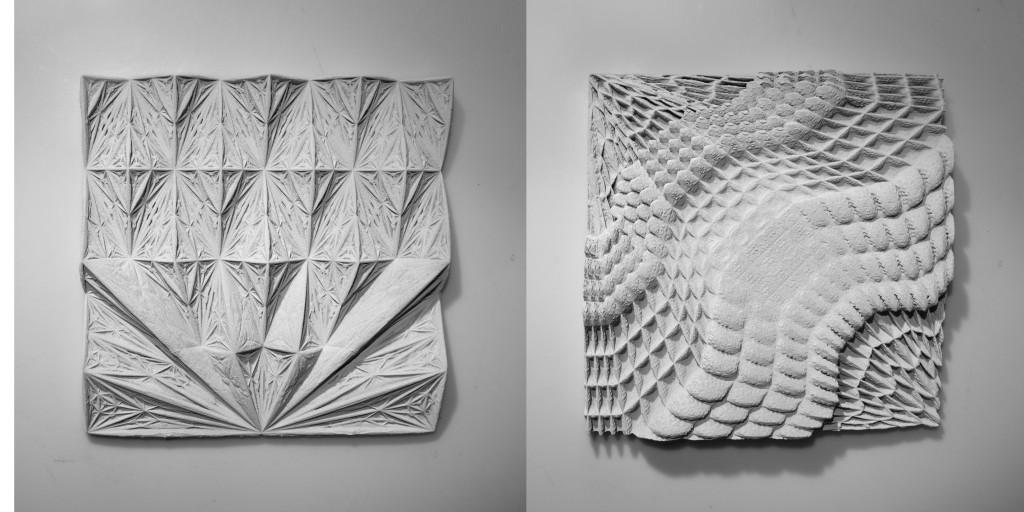Sandstone has been used in construction since ancient times. Until now, if you wanted an impressive structure created from sandstone you only had two approaches to choose between: (slow option) skilled craftsmen spending months painstakingly carving the necessary pieces or (the slower option) a wait of millennia while nature wears natural sandstone deposits into magical shapes like those found in Lower Antelope Canyon.
The driving idea behind the coursework was to challenge existing notions of possibilities present in prefabrication. The structural capacity for 3D printed sandstone is very similar to that of natural sandstone, but the potential for the modification of the form is greatly expanded by 3D printing techniques. The two prohibitive factors present in the use of sandstone for formal experimentation have been time and cost, both of which are handily addressed through the process developed in this project.
The students described their project in an invitation to their thesis show:
“We investigated the potential and limitations of 3D san printing for architecture with a focus on structure, topology, resolution and ornamentation. We speculated about the impact of this fabrication method based on the reciprocal relationship between parts and whole and between surface and volume in architectural constructions.”
I would very much like to see an exploration of the quality of the material be more highly developed. Currently, the form is well explored, but the color and materiality leaves something to be desired. One of the striking aspects of sandstone is the limpid colors that flow through it, creating dancing patterns on its surface. I would also very much like to see an assembly of these tiles as one in isolation is such a different experience than a multitude.
These are some bright students with an impressive eye and quick wit. I look forward to seeing how they bring these ideas forward into their architectural practices.
Let us know what you think of these tiles and this technique in the 3D Printed Sandstone Tiles forum thread at 3DPB.com.
